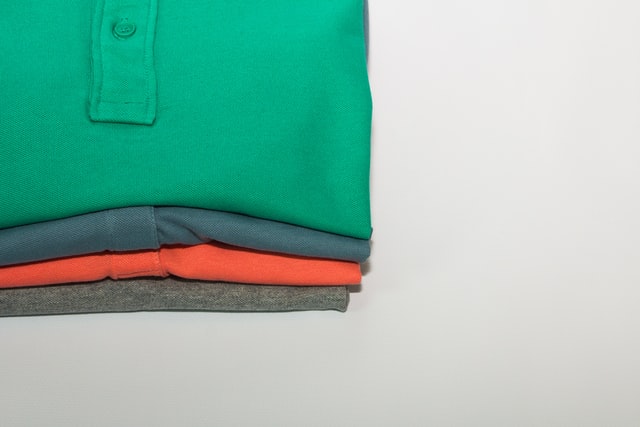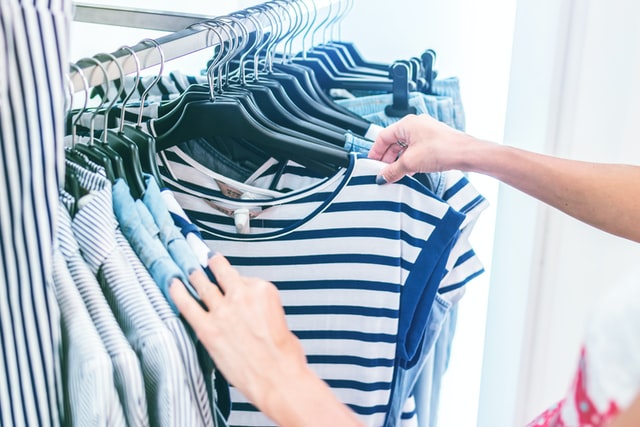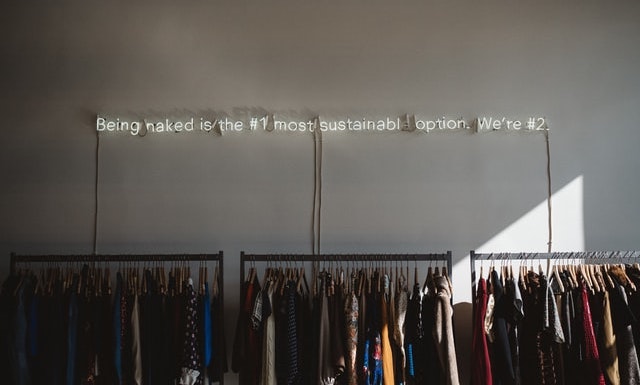An interview with Susanna Koelblin – Global Apparel Commercialization & Sourcing Leader
By: Kohan Textile Journal
Today Susanna is spearheading commercialization at fashion brands for the Textile Franchise of Eastman in EMEA and the Americas. she and her team propel fashion brands to create their products in a more sustainable way by adding the bio-based yarn NAIA™ to their collections.
She covers all steps of the fashion value chain on a global level, always with a special focus on sustainability and circularity.
1. Could you please let us know more about yourself and your experiences in the textile and sustainability sector?
Before joining Eastman, I served in various roles in the fields of commercialization and sourcing apparel and textiles at major fashion, sports, retail and textile companies. The environmental and social footprint and integrity of the clothing and textile industry has been a primary focus for me as long as I worked in the textile and fashion industry. I lived and served in multiple assignments in Asia, Europe and North America. I also know the MENA region very well from previous posts.

2. Why sustainability in the textile industry is important for our future?
Simply because we have to change how we produce, market and consume fashion.
Companies in the textile and fashion industry throw around terms such as green, eco and responsibly-made. The use of such words is not effectively regulated. They are non-quantifiable adjectives. The word sustainable itself has no concrete legal definition. For the sake of definition let’s apply the following assumption: The term sustainability refers to any system designed to exist in a balanced state.
In an ecological context, sustainability is achieved when all that is taken from the environment can be renewed. Sustainability means sustaining a healthy economic, environmental and social system for human development. Applied to the textile industry, it can be defined as a system in which supply, production, and consumption of textile products have been designed in a way that ensures environmental, social and economic sustainability.

Fashion accounts for around 10% of greenhouse gas emissions from human activity. 70 million barrels of oil a year are used to make polyester fibers in our clothes. What makes the fashion industry particularly problematic is the frenetic pace of change it not only undergoes, but encourages. The average consumer now buys 60% more clothing than they did 15 years ago. Globally around 56 million tons of clothing are bought each year, and this is expected to rise to 93 million tons by 2030 and 160 million tons by 2050.
Over time, the implications of this strategy have heightened impulsive fashion purchases and shortened the lifecycle of fashion products to the level that fashion products are now considered as disposable commodities. 40% of clothing purchased in some countries is never used. Because of this trend, many of today’s inexpensive fashion items are being discarded only after being worn just a handful of times. In fact, thanks to such practices, fashion has been introduced as one of the most polluting sectors. It touches on five major areas: waste, water, toxic chemicals, energy and CO2 emissions.
The future of fashion is in biomaterials, circularity and new business models. This implies continuous work to improve all stages of the product’s life cycle, from design, raw material production, manufacturing, transport, storage, marketing and final sale, to use, reuse, repair, remake and recycling of the product and its components. From an environmental perspective, the aim should be to minimize any undesirable environmental effect of the product’s life cycle. Fashion companies should contribute to encouraging more sustainable consumption patterns, caring and washing practices, and overall attitudes to fashion.

Fast fashion is leading to a mountain of clothing being thrown away each year and has a huge impact on the environment. Using recycled, rather than virgin, materials offers an opportunity to drastically reduce non-renewable resource inputs and the negative impacts of the industry, like CO2 emissions, water and chemical use. While recycling and more sustainable fabrics will be a key part of the solution, consumers too will need to change their behaviour.
Fashion industry reached 55 billion dollars in the MENA region
3. What do you think about the Middle East and Africa Textile and fashion market and its potentials?
The fashion industry reached 55 billion dollars in the MENA region. The annual spending for fashion per person is $500 in Saudi Arabia (double of China) and $1,600 in the UAE (double the US), this is among the highest in the world. The GCC market presents significant opportunities amid a pessimistic global outlook for the industry. The Middle East still has potential, despite an already well-established fashion market. While the Gulf countries are far smaller than China in terms of population size, the propensity of its shoppers to spend big is what gives the region an outsized role among international markets. Shoppers in the region have developed a taste for both modest fashion and homegrown labels that reflect their culture.
The demand for ethnic wear including burkhas and hijabs is projected to witness significant growth owing to the increasing availability of products through various brands including Tommy Hilfiger and Nike.

African manufacturers are trying to integrate sustainability into their textile and fashion supply chains. The Moroccan government for instance is providing incentive for companies to be sustainably certified. Global brands have implemented environmental priority standards for North Africa’s largest garment producers. Incremental changes in resource efficient and cleaner production are already taking place in various African sourcing countries. A challenge for certain African manufacturers to be sustainable is that low cost labour enables them to be competitive for sourcing, yet local production of fabrics and textiles is often lacking, or are costly compared to importing from China.
4. What we should do with our textile waste especially used cloths and garments?
Globally we are almost throwing away the same amount of clothes that is produced annually. Most of all textiles thrown away are either dumped into landfill or burned. The current fashion system uses high volumes of non-renewable resources, including petroleum, extracted to produce clothes that are often used only for a short period of time, after which the materials are largely lost to landfill or incineration. There are good reasons to seek alternatives to chucking clothes in the bin.

To make clothes circular, recycling could help to reduce the toll fashion has on the environment. Today, plastic recycling is very much in vogue, partly thanks to widely publicized problems with plastic pollution. Public appreciation of the need to apply the three Rs – reduce, reuse and recycle – to this material is at an all-time high. Awareness of the need to apply the same logic to our clothing remains firmly out of the spotlight.
In the US only 12% of clothes are collected, whereas in the UK 60% of the clothes are collected for recycling. Globally we only collect 20% of end of use textiles, the rest end in landfills. It’s a huge loss of these raw materials. This endless circle doesn’t make sense.
Less than 1% of the material in clothing is recycled into new garments. Most garments that are recycled are down-cycled. The biggest issue holding garment-to-garment recycling back is fiber quality, fibers are damaged during both wearing and washing.
You can’t take a well-used T-shirt, mechanically tear it apart and then make the fibers into a new one, because they have lost so much fiber quality that the garment will not be of enough quality to fit into the market. Most of the recycling that can turn fibers back into fabric requires that the feedstock is based on mono-material. The problem is that most of the garments are made of fabric blends that make it impossible to recycle.
One option is to mix mechanically recycled fibers in with virgin fibers. Another possibility is to chemically break fibres down into their chemical building blocks and then rebuild them into new fibers with indistinguishable characteristics than virgin fibers. Only with a chemical approach we can get the raw materials back and close the loop on textile recycling. But we are far away to make all the clothes we consume circular. However, it is best to prevent waste in the first place and start with reducing by selling and buying fewer new clothes and producing them with fewer resources.
5. Normally end users think they should pay too much money for sustainable clothes and garments. Is it always true or can we find sustainable products in normal price as well?
In general, clothes are too cheap, the race to the bottom has totally ruined our perception of value. Consumers have no idea what clothes should cost. This has nothing to do whether a garment is sustainably made or not.
Yes, money is the deciding factor. Studies show that consumers are not willing to pay more for sustainable fashion and would rather pay more for style, quality and fashion that gives them value for money. If conventional products are being deeply discounted, it interferes with people’s desire to do the right thing.

As outlined above, it is vital that sustainable clothing doesn’t remain a luxury available only to a few. There’s a perception that sustainable fashion is expensive, this is not necessarily the case.
Today a sustainable garment is primarily defined by the sustainable materials that has been used, at the end, it comes back to the fabric. It’s a matter of defining what makes a fabric sustainable. Is recycled polyester really sustainable, despite the fact it is made of recycled PET bottles and not from polyester clothes? Or is a renewable source for a fibre more sustainable? Or is a biodegradable yarn sustainable? Or is a regional produced garment sustainable since it didn’t travel around the half globe from production to consumer?
At the end everyone has to decide for his or her own what is sustainable. Based on today’s broadly accepted definition of sustainable garments you don’t have to pay more for sustainable clothes compared to regular ones. It seems like the antithesis of sustainability, but you get sustainable products from fast fashion companies such as H&M for the same price as you pay for not sustainable ones, thanks to the sheer volume of its production.

H&M’s Conscious Collection, which features garments made of at least 50% sustainably sourced materials, currently offers T-shirts priced from $9 to $26. H&M’s size also allows it to invest and scale-up new technologies and materials. And there is a vast amount of new small sustainable fashion brands all over the globe, but those are usually priced in the medium and premium segments. But those aren’t necessarily higher priced than unsustainable brands in the same segment. You have to consider the ethical aspect to this discussion as well, since there is an increased focus on the treatment of workers, who were left in a desperate situation due to brands cancelling orders during the pandemic.
The most sustainable garment is the one that is never produced. It’s not just a matter of what we consume, but also of how much. The best way to be a more sustainable shopper is to buy less and less cheap items; to buy more items of quality and things that are timeless and made for longevity. Buying five sustainably produced items that you don’t need is still a waste of resources. Encouraging consumers to buy fewer items is the most radically sustainable thing a fashion brand can do. Fashion was more sustainable in the past because fewer people could afford large wardrobes. But if you knew exactly why a T-shirt cost $5, I think you’d be happy to put it back on the hanger.

6. How textile and fashion manufacturers should move their way to a sustainable road?
Textile and fashion manufacturers in the MENA region should follow the guidance of global brands and comply to what they require.
The Geneva-based International Trade Centre (ITC), through its Global Textile and Clothing (GTEX) program, has been seeking to help outsourcing countries to improve their export competitiveness as a result, notably in Egypt, Morocco, Tunisia and Madagascar, where it is working with manufacturers to improve sustainability.
Global brands have implemented environmental priority standards for North Africa’s largest garment producers, Morocco, Tunisia and Egypt. If companies do not comply, they are not a supplier anymore. In Tunisia and Morocco, H&M has set a 2020 target to use 100% sustainably sourced materials, and by 2030, 100% recycled and sustainably sourced materials.
In Egypt, Tunisia and Morocco, Hugo Boss, Gap, PVH and Levi’s have set a Zero Discharge of Hazardous Chemicals (ZDHC) target by this year. Hugo Boss, Gap and VF have defined targets for the usage of sustainable cotton between 2020 and 2025. Sustainability schemes for outdoor apparel have to be 100% PFC-free. Half of nylon and polyester has to come from recycled materials.
There is a heightened sense of needing to comply with brands’ sustainability commitments to remain suppliers. A close collaboration with brands is essential to remain a supplier.

7. How textile and fashion standards can help to green and sustainable production?
There are many, probably too many, certifications and standards out there helping us consider the environment and ethical work environments. A few important ones are the following standards:
• Bluesign indicates all the input streams from raw materials to chemical components and resources used are assessed on their ecological impact.
• ZDHC is a group of apparel and footwear brands and retailers working together to lead the industry towards zero discharge of hazardous chemicals by 2020.
• OEKO-TEX SteP (Sustainable Textile Production) is an independent certification system for brands, trading companies and manufacturers along the textile chain to communicate their sustainable production conditions transparently and credibly.
• Higg FEM (Facility Environmental Module) measures seven environmental impact areas in factories including greenhouse gas emissions, water use and chemicals management.
Again, brands guide which standards are required to qualify to be a supplier.



















